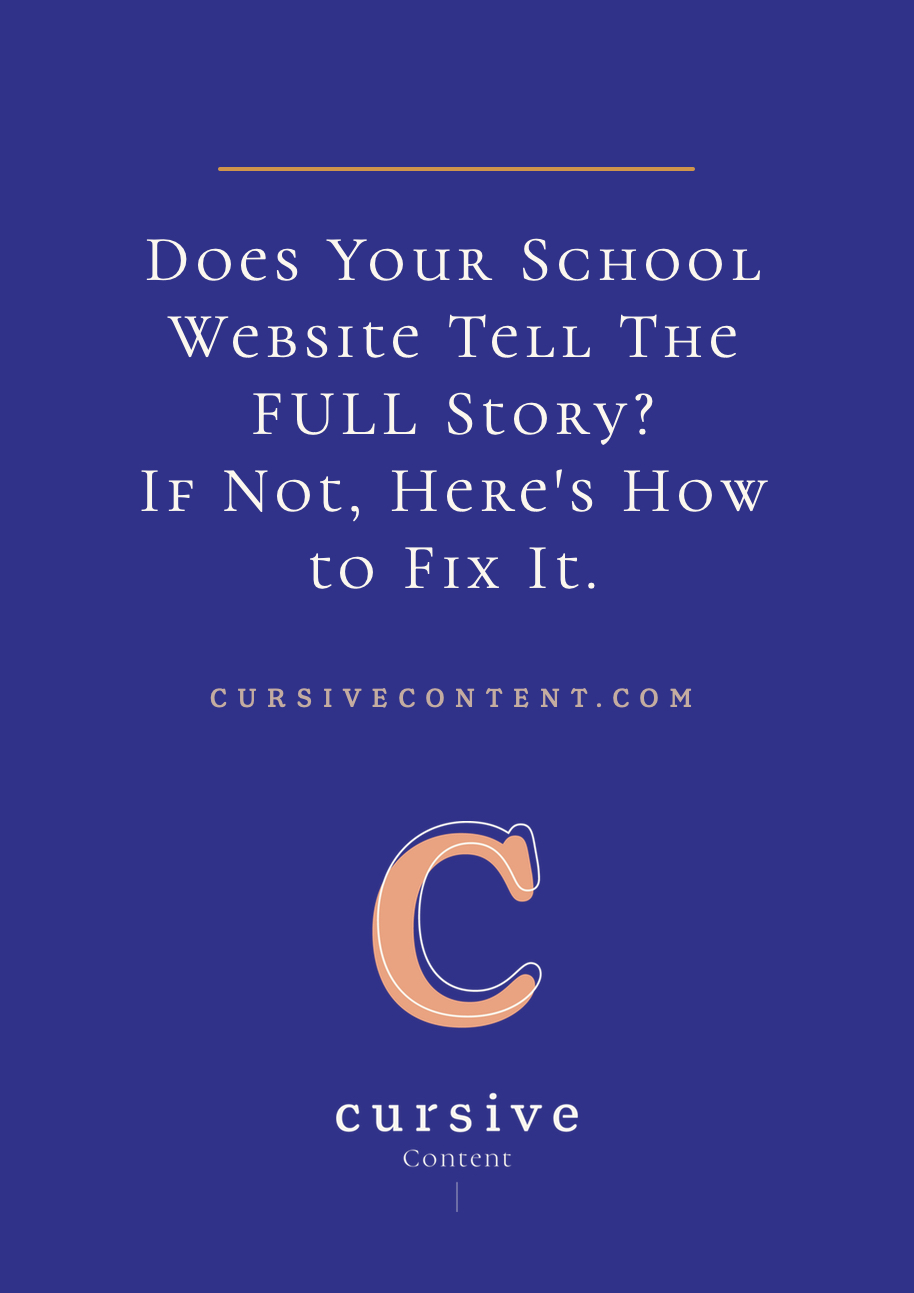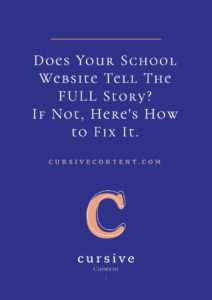Does Your School Website Tell The FULL Story? If Not, Here’s How to Fix It.

Remember those “Choose Your Own Adventure” books from the 1980s? The ones that allowed you to make decisions that influence the story’s outcome?
I loved those books. (I even used the theme to write a blog post about the adventure of content marketing.) But did you ever try to read those books straight through? Without following the different pathways the author set?
If you did, you quickly realized that the books are not meant to be explored cover-to-cover — in order to experience the story, you needed to follow your own unique path; the path that was most interesting to YOU.
And that’s how websites work these days.
Visitors don’t simply land on your home page and begin exploring your site page by page, section by section. Instead, they enter on a page that is most relevant to the information they’re seeking — perhaps led there from a Google search or a third-party link — and they explore the pages that they find most interesting.
Since every page on a website can be the first page someone sees (or the second, or the third…) it’s critical that each page best represents your school and tells your school story.
So how can you ensure that your visitor will get the FULL picture of your school, regardless of the paths they choose to explore?
#1: Repeat themes.
Yes, it’s OK to be a little repetitive with your content. While you don’t want to copy and paste language word-for-word, it’s good to reintroduce important key messages throughout your site.
Reinforcing your school’s positioning statement, your brand attributes, your values and beliefs, and your differentiating characteristics across your site’s various sections is a way to ensure any rogue website explorers won’t miss the good stuff.
#2: Set clear pathways.
You know what I hated about reading the “Choose Your Own Adventure” books? When I would select a story path that led to a page emblazoned with the words THE END. (I’d always cheat and backpedal to make a different choice.)
Never, never lead your website visitors down a dead end. If you want them to continue to explore, you have to show them where to go. Give them options. Include call outs with imagery and words that entice visitors to click through to learn about a related topic. Show them similar articles at the bottom of each blog post (like we do here!). Because if you don’t tell your visitors what to do next, they won’t do anything.
#3: Use video.
Video is a fantastic way to bring your brand story to life — and include that story throughout your website.
By creating a compelling video that truly demonstrates what your school is about, and what your school environment is actually like, you’ll capture the attention of the scanners and clickers who are less interested in words.
#4: Go deep.
For those visitors who AREN’T petrified of reading — the ones who WANT to explore more of what you do — make sure you provide layers of content. This means not only having your standard web pages written with flawless and expert language that stands the test of time, but also providing new content that shows your school story’s progression.
Blogging, social media, gated content and more in-depth content pillars allow the super explorers to continue setting new pathways and experiencing new story depths.
So those are four ways to ensure your website tells your FULL school story. Want more tips on how to create and share stories your audiences will love? Sign up for our free Resource Library.
MORE ARTICLES
-
 What Is Your Private School’s Bold & Unifying Big Promise?
What Is Your Private School’s Bold & Unifying Big Promise? -
 Viewbook Best Practices for Private Schools
Viewbook Best Practices for Private Schools -
 AI Writing Prompts to Power Private School Storytelling
AI Writing Prompts to Power Private School Storytelling -
 How to Write a Magnetic Private School “About” Page
How to Write a Magnetic Private School “About” Page -
 The Ultimate Call-to-Action for Every Private School Marketing Situation
The Ultimate Call-to-Action for Every Private School Marketing Situation -
 How to Write a Compelling School Magazine Article People Want to Read
How to Write a Compelling School Magazine Article People Want to Read -
 How to Make Parents Love Your Website (and Your School)
How to Make Parents Love Your Website (and Your School) -
 4 Quick & Easy Ways to Improve Your School’s Emails
4 Quick & Easy Ways to Improve Your School’s Emails


[…] Does Your School Website Tell The FULL Story? If Not, Here’s How to Fix It. […]